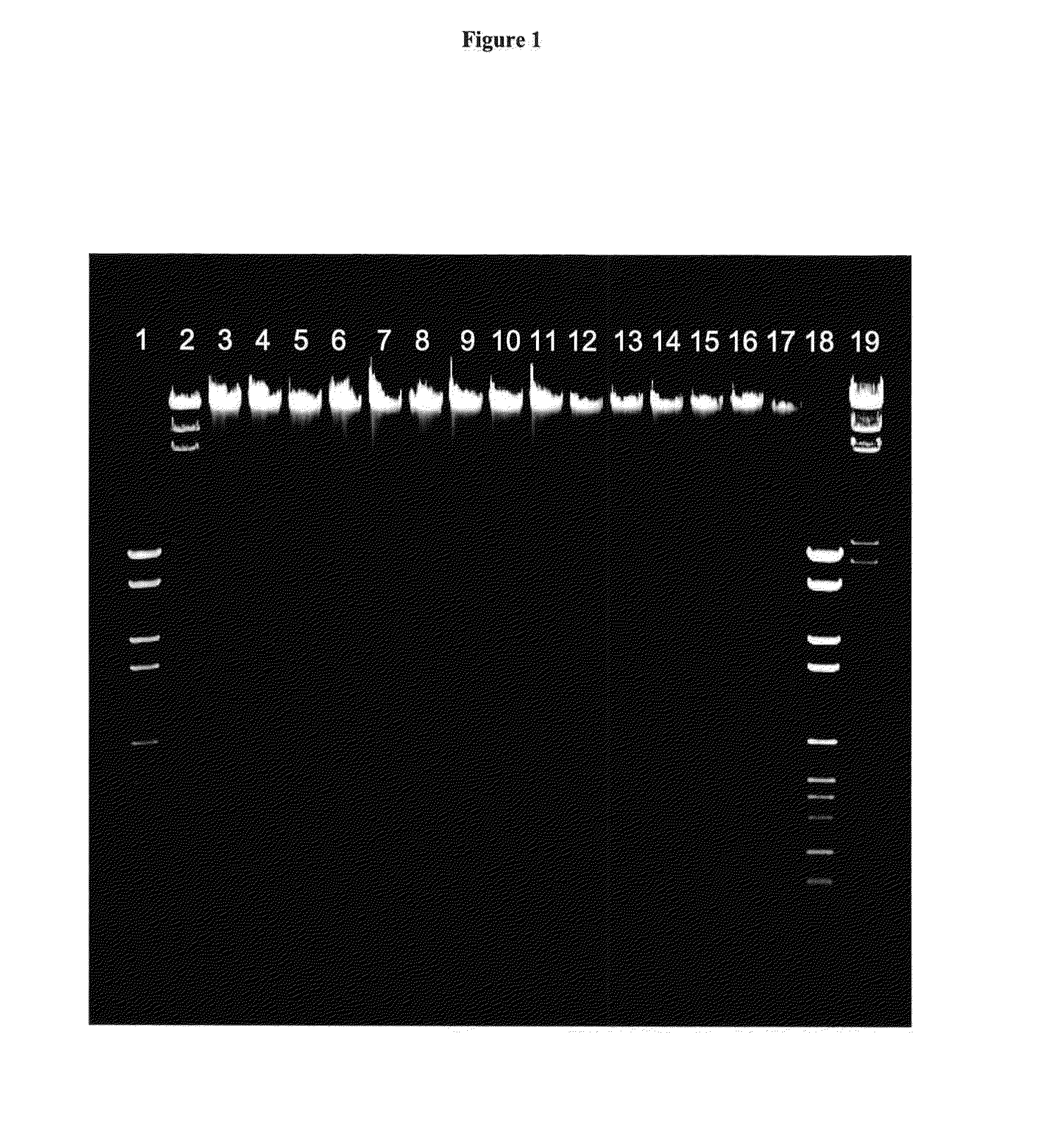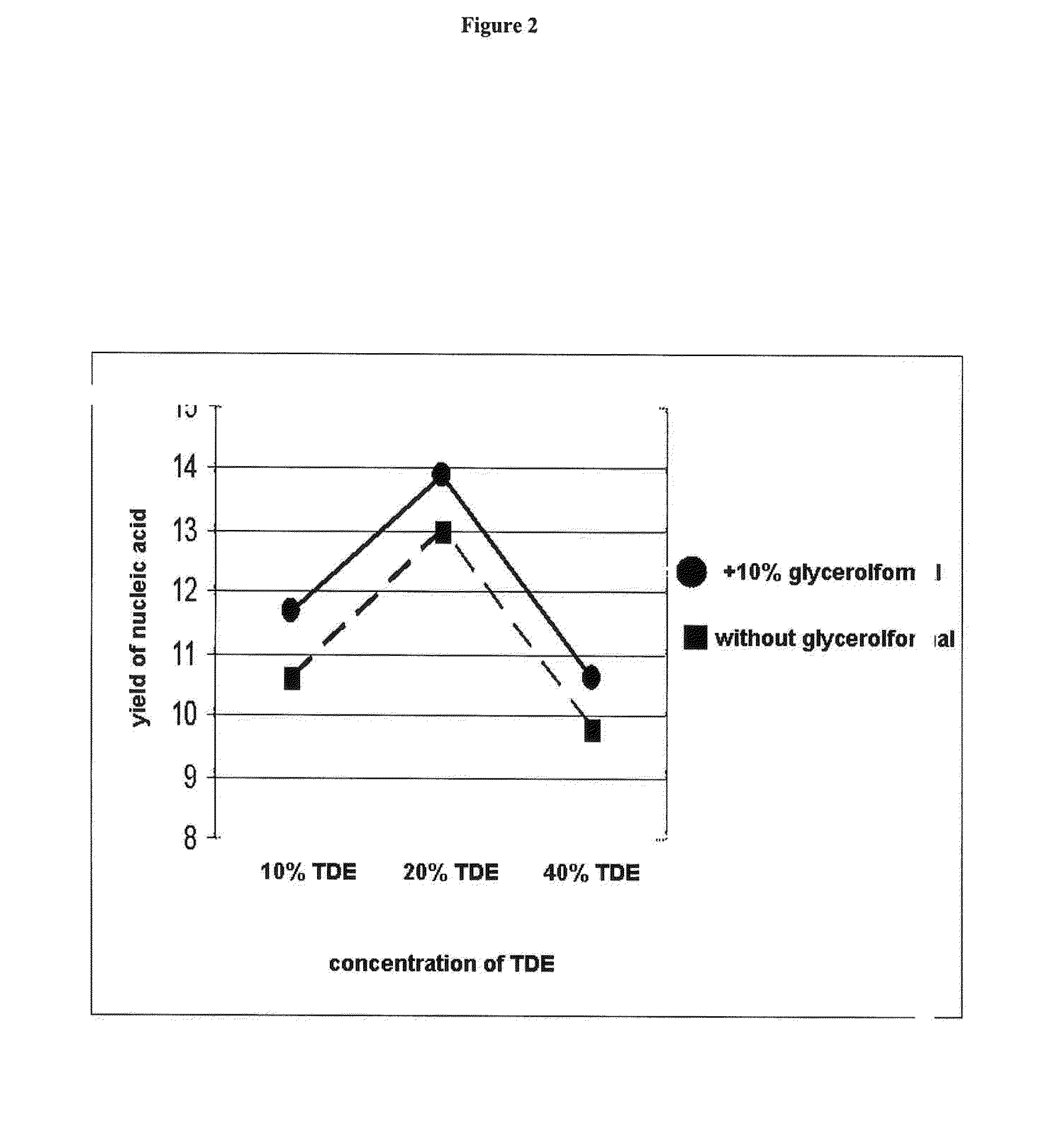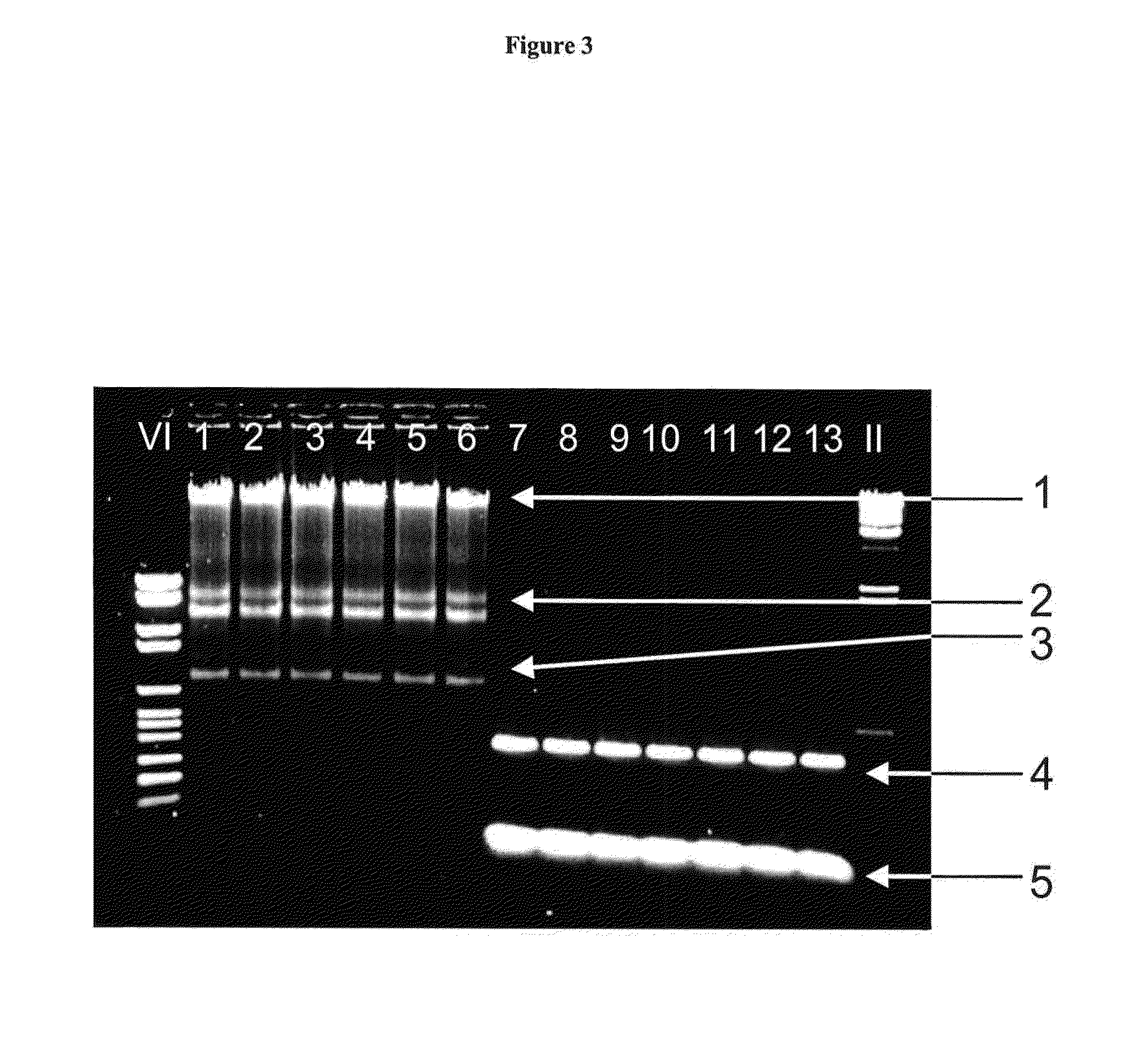Use of tde for isolation of nucleic acids
a nucleic acid and tde technology, applied in the field of nucleic acid purification, can solve the problems of high enzymatic degradation, use of poisonous reagents, time-consuming and laborious workflow,
- Summary
- Abstract
- Description
- Claims
- Application Information
AI Technical Summary
Benefits of technology
Problems solved by technology
Method used
Image
Examples
example 1
Purification of Total Nucleic Acids from Blood Samples
[0165]The workflow for purification of the nucleic acids (NAs) includes the following steps: Lysis of the sample in order to make the nucleic acids accessible for the purification process. Adsorption of the NAs onto the solid phase, separating the solid phase from the liquid phase and washing the solid phase with the bound NAs, and desorbing the NAs from the solid phase.
[0166]Each sample consisted of a volume of 200 μl of EDTA whole blood. The solid phase used was silica fleece present in HIGH PURE spin columns (Roche Diagnostics GmbH, Mannheim, Germany). Compounds tested for binding enhancement to the silica fleece were selected from Table 1, except those that show toxic properties. Toxic compounds were excluded.
[0167]EDTA blood was pooled and aliquots were subjected to nucleic acid isolation according to the following protocol: 200 μl whole EDTA blood was mixed with 200 μl Binding. Buffer (6 M guanidine HCl, 100 mM MES, 18.5% [...
example 2
Purification of Total Nucleic Acids from Tissue Culture Cells
[0171]The workflow for purification of the nucleic acids (NAs) includes the following steps: Lysis of the sample in order to make the nucleic acids accessible for the purification process. Adsorption of the NAs onto the solid phase, separating the solid phase from the liquid phase and washing the solid phase with the bound NAs, and desorbing the NAs from the solid phase.
[0172]Total nucleic acids were purified from 1×106 K562 cells. Sedimented cells were resuspended in 200 μl PBS buffer. Afterwards 200 μl binding buffer (6 M guanidine HCl, 100 mM MES, 18.5% [v / v] TRITON X-100, pH 5.7) and a measured amount of TDE (final concentration of TDE: 10%, 20% and 40% [v / v]) were added and mixed. Each sample was applied to a spin column (HIGH PURE spin column, [CATALOG #] Roche Diagnostics GmbH, Mannheim, Germany) and processed according to standard procedure (HIGH PURE PCR Template Preparation Kit, user manual version April 2005, Ro...
example 3
Purification of Nucleic Acids from Tissue Culture Cells
[0173]Nucleic acids were purified from 1×106 K562 cells. Sedimented cells were resuspended in 200 μl PBS buffer. Afterwards 200 μl binding buffer (6 M guanidine HCl, 100 mM MES, 18.5% [v / v] TRITON X-100, pH 5.7) and 100 μl TDE were added and mixed. Each sample was applied to a spin column (HIGH PURE spin column, Roche Diagnostics GmbH, Mannheim, Germany) and processed according to standard procedure (HIGH PURE PCR Template Preparation Kit, user manual version April 2005, Roche Diagnostics GmbH, Mannheim, Germany, Catalogue No. 11796828001). A first and a second washing buffer were used consecutively in each isolation / purification process. To prepare the first washing buffer (inhibitor removal buffer) a volume of 20 ml TDE or ethanol is added to a volume of 33 ml concentrated stock solution of washing buffer 1 to form a buffer in which the final concentration of TDE or ethanol is about 39% [v / v], along with the remaining ingredie...
PUM
| Property | Measurement | Unit |
|---|---|---|
| Fraction | aaaaa | aaaaa |
| Fraction | aaaaa | aaaaa |
| Fraction | aaaaa | aaaaa |
Abstract
Description
Claims
Application Information
 Login to View More
Login to View More - R&D
- Intellectual Property
- Life Sciences
- Materials
- Tech Scout
- Unparalleled Data Quality
- Higher Quality Content
- 60% Fewer Hallucinations
Browse by: Latest US Patents, China's latest patents, Technical Efficacy Thesaurus, Application Domain, Technology Topic, Popular Technical Reports.
© 2025 PatSnap. All rights reserved.Legal|Privacy policy|Modern Slavery Act Transparency Statement|Sitemap|About US| Contact US: help@patsnap.com



